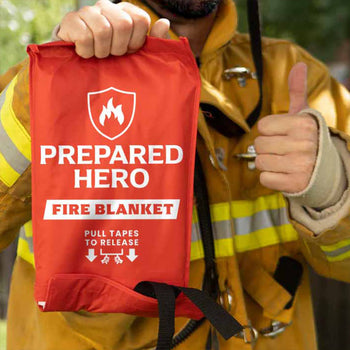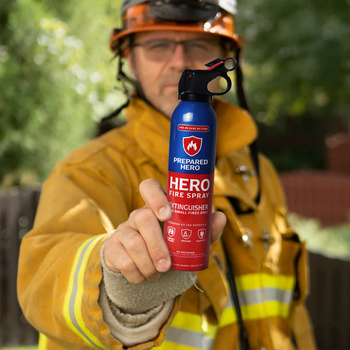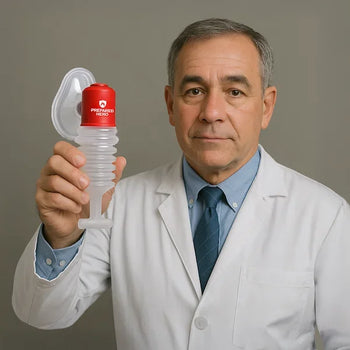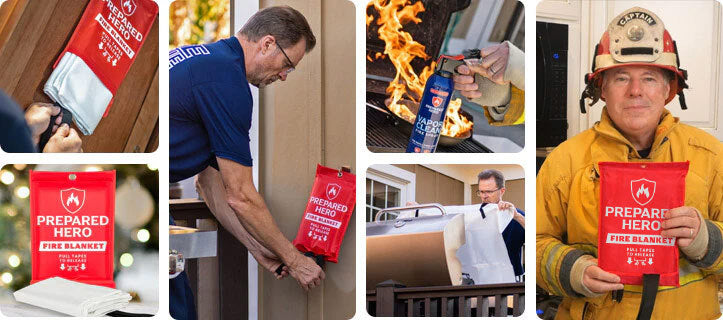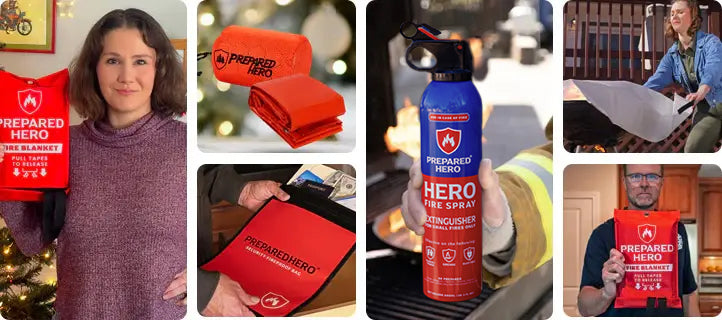Where you put your smoke detectors matters just as much as installing them. Proper placement makes sure they can detect...
Did you know? Approximately 66% of all home cooking fires are caused by cooking materials, including food, fat, and grease.
Grease fires are tricky to put out because water makes them worse. Plus, oils burn at extremely high temperatures and cause explosions. Fortunately, there’s something specifically made to put out grease fires: Class K fire extinguishers.
But how exactly do they work? What are they made of? How do you use them safely? This guide covers everything you need to know about Class K or grease fire extinguishers.
What Is a Class K Fire Extinguisher?

Grease fires are dangerous because the oil can easily splash and spread to other areas of your kitchen. According to the Federal Emergency Management Agency (FEMA), 45% of non-confined cooking fires at home involve oil, fat, or grease.
Plus, oil, fat, and grease are highly flammable, so they can easily catch fire. Different oils burn at different temperatures, but every oil can catch fire if the temperature is high enough. Smoke points for common oils range from 330°F to 520°F. Oil also heats up quickly, and once it starts to smoke, it can catch fire in as little as 30 seconds.
Fortunately, a Class K fire extinguisher can put out grease or Class K fires, the most common type of cooking fire. They’re caused by activities and situations, such as:
- Deep frying
- Unattended cooking
- Grease buildup
- High cooking temperatures
- Oil spills or leaks
- Using the wrong pot or pan
Grease fires are difficult to put out, so there’s just one type of fire extinguisher you can use: wet chemical. Wet chemical fire extinguishers are designed to smother the flames by reacting with the oil, fat, or grease. Then, the wet chemicals create a soapy layer that cools down, smothers, and eventually puts out the fire. Always be prepared and put your grease fire extinguisher in an accessible spot, especially when you cook with oil.
What Is a Class K Fire Extinguisher Used For?

While fire extinguishers are your first line of defense against fries, not all serve the same purpose. In fact, using the wrong fire extinguisher type can lead to life-threatening consequences. Here’s what Class K fire extinguishers are used for:
Unattended Cooking
Unattended cooking is the top cause of cooking fires and cooking fire casualties, according to the National Fire Protection Association (NFPA). Distractions like watching TV or drinking alcohol take your focus away from cooking. For instance, olive oil can ignite and set a blaze if you take a phone call while frying chicken.
Deep Frying
Deep frying is another common cause of grease fires. A Class K fire can occur if the oil is too hot or you throw food into the fryer. Frying frozen food without thawing also produces steam that can ignite or push the oil out of the fryer. For example, frying frozen chicken wings directly from the freezer can start a grease fire.
Grease Buildup
Grease can accumulate on stovetops, ovens, or vents. Once heat or open flames reach this buildup, a Class K fire can start. For example, not cleaning your stove regularly can cause grease buildup. The next time you turn it on, the heat or flame can ignite the grease.
High Cooking Temperatures
Cooking oils have smoking points—the temperature at which they smoke and break down. When oil is heated over this point, it produces smoke and catches fire. For example, if you leave oil under high heat for too long, a serious blaze can occur.
Oil Spills or Leaks
Accidental oil spills are also dangerous fire hazards. Oil can ignite quickly if it spills on the stovetop or in the oven. For instance, oil spilling from a casserole dish in the oven can start a Class K fire once you turn on the oven again. So, clean up oil spills or leaks immediately to prevent dangerous fires in your kitchen.
Using the Wrong Pot or Pan
Not all cooking pots or pans are made for high-temperature frying. Using pots or pans that can’t withstand extreme heat can lead to grease fires. For instance, a thin alloy pan meant for low temperatures can ignite the oil if used to deep fry meat.
What Is a Class K Fire Extinguisher Made Of?

Using a fire extinguisher not meant for grease fires can lead to a much bigger fire or explosions. Contrary to popular belief, you should never use water to put out a grease fire.
It’s because water and oil don’t mix. You see, water is denser than oil. When you throw water into a pan or pot of oil, it goes under it. The water then reaches the scorching surface and quickly turns into steam.
When water turns into steam, its volume expands up to 1,600 times. This sudden expansion can splash the burning oil. This quickly spreads the fire to areas beyond your kitchen.
For these reasons, Class K fire extinguishers are made of wet chemicals. The extinguishing agent is usually made of potassium acetate, potassium carbonate, potassium citrate, or a combination of the said chemicals.
A Class K wet chemical fire extinguisher works by cooling the oils below their autoignition points. The chemicals also create a soapy blanket that stays on top of the fuel. This is possible because the acidic or low-pH extinguishing agent reacts with the basic or high-pH oil or grease. The soapy blanket prevents the fire from reigniting as well.
Since the chemicals come out as a fine spray, they also prevent the oil from splashing everywhere. Plus, they’re safe to use on Class K fires that involve electrical appliances (e.g., putting out an electrical oven grease fire), even though they’re wet.
How Is Class K Different Than Class B Fire Extinguishers?

Many people think Class B fire extinguishers can be used on Class K fire extinguishers. The reasoning behind this is that oil is a flammable liquid. Since Class B fire extinguishers can put out fires caused by flammable liquids, they should be able to put out oil fires, too.
Unfortunately, you can’t use a Class B fire extinguisher to put out a grease fire. For one, Class B fire extinguishers are made of water mist, powder, foam, or carbon dioxide. On the other hand, only wet chemical extinguishers can put out Class K fires.
Plus, Class K fire extinguishers are made for fires involving deep fat or cooking oil. The big difference is the depth of the fuel and whether it’s liquid (oil) or solid (grease and animal fat). Grease fire extinguishers also release agents with less pressure than Class B because they have to penetrate the top layer of the oil without splashing it.
How to Identify Class K Fire Extinguishers
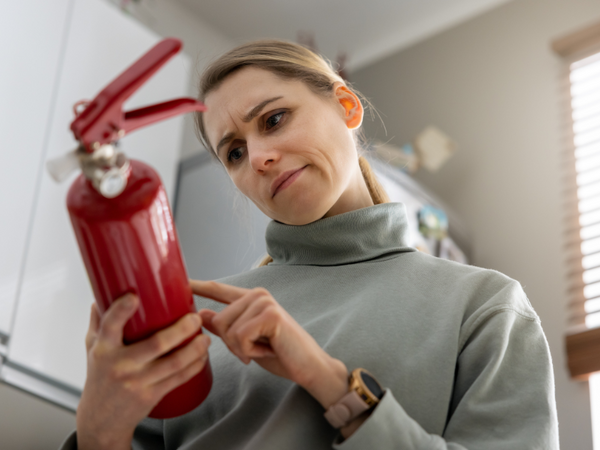
Class K fire extinguishers have a specific symbol: a black hexagon with the letter K inside it. This hexagon indicates that it can put out fires caused by oil, fat, and grease. If you see the black hexagon label, it’s the right extinguisher for a grease fire.
Contrary to popular belief, you can’t use multi-purpose extinguishers to put out Class K fires. These fire extinguishers usually show the letters A, B, and C in different shapes. Watch out for these symbols to make sure you’re not using the wrong extinguisher.
Unlike other fire extinguishers, Class K fire extinguishers don’t come with ratings. According to the NFPA, there’s only one test for grease fire extinguishers, which is pass or fail.
How to Use a Class K Fire Extinguisher

Fire extinguishers help keep your loved ones and property safe during a grease fire emergency. However, owning a Class K fire extinguisher means nothing if you don’t know how to use it. Fortunately, fire safety experts came up with an easy-to-remember acronym for using a Class K fire extinguisher: PASS.
PASS stands for Pull, Aim, Squeeze, and Sweep. While some extinguishers have specific guidelines, PASS is the basic protocol for using fire extinguishers. Here’s how to use a Class K fire extinguisher:
Pull: Pull the fire extinguisher’s safety pin to unlock the grease fire extinguisher.
Aim: Aim the hose or nozzle at the base of the fire.
Squeeze: Squeeze the lever or handle to release the extinguishing agent.
Sweep: Sweep the fire extinguisher from side to side until the fire dies.
Please note that the PASS fire extinguisher technique is just one part of putting out a fire. You should also know when it’s safe to put out the fire. If you know how to use a Class K fire extinguisher, but the fire is too large, don’t fight it. Evacuate your house and call the fire department immediately.
How to Maintain Class K Fire Extinguishers

Keeping your Class K fire extinguisher in good condition ensures it works against grease fires. While maintenance may take some of your time, it’s worth it. So, how do you exactly maintain your grease fire extinguisher?
Begin by regularly checking your fire extinguisher. Check for any signs of physical damage every month. Is the safety pin intact? How about the pressure gauge? Is the hose cracked? Answering these questions helps you assess if your Class K fire extinguisher needs to be replaced.
You can also call a professional to inspect your Class K fire extinguisher at least once a year. They can check your extinguisher thoroughly and ensure everything meets fire safety regulations.
Hydrostatic testing should be on your list as well. In general, grease fire extinguishers have to be tested every five years. However, you should stick to specific manufacturer guidelines if they say otherwise.
When to Replace Class K Fire Extinguishers

Class K fire extinguishers don’t last forever. Like other fire prevention tools, they will eventually break down. Find out when to replace your Class K fire extinguishers below:
1. Your Class K fire extinguisher is expired.
Replace your Class K fire extinguisher once the expiration date has passed. Class K fire extinguishers usually come with an expiration date, which you can find on the containers. How long a Class K fire extinguisher lasts depends on many factors, including the extinguishing agent and type of container used.
2. Your Class K fire extinguisher is damaged.
Physical damages make grease fire extinguishers. Watch out for dents, cracked hoses, loose handles, broken pins, rust, and missing parts. These issues can render your grease fire extinguisher when you need it the most.
3. Your Class K fire extinguisher has low pressure.
Pressure lets the wet chemicals steadily come out to put out a grease fire. Without enough pressure, the chemicals won’t discharge with the right force or not at all. If the pressure gauge is in the red zone, it’s time to replace your grease fire extinguisher.
How Much Are Class K Fire Extinguishers?
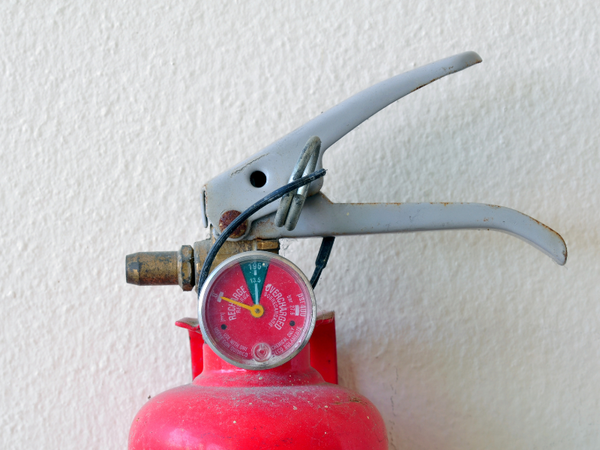
Class K fire extinguisher prices vary based on many factors, including the size and chemicals used. In general, Class K fire extinguishers range from $100 to $400.
Small, portable fire extinguishers weighing five to ten pounds cost $100 to $200 each. These fire extinguishers are best used in home kitchens. Bigger Class K fire extinguishers weighing 10 pounds or more can cost $200 to $400 each. They are best suited to commercial kitchens with lots of cooking equipment.
Class K Fire Extinguisher Alternatives

While grease fire extinguishers help a lot, they can be expensive, heavy, and hard to store. They might also contain irritating chemicals and leave a mess that’s hard to clean up.
A fire spray is an easy-to-use, lightweight, and affordable alternative to Class K fire extinguishers. Prepared Hero’s fire spray is also biodegradable and non-toxic. Unlike a fire extinguisher, you can safely use it around your family and pets.
Here’s a table summarizing the differences between Prepared Hero’s fire spray and a regular Class K fire extinguisher:
|
Prepared Hero’s Fire Spray |
Regular Fire Extinguisher |
|
Lightweight, easy to carry |
Heavy, hard to carry |
|
Affordable |
Expensive |
|
Easy to store |
Needs more space for storage |
|
100% biodegradable |
Mostly made of non-biodegradable materials |
|
Non-toxic |
Toxic |
|
Easy to clean |
Hard to clean |
|
Safe for kids and pets |
Not safe for kids and pets |
Another alternative is a fire blanket, which depletes the fire’s oxygen supply. By doing this, it puts out small grease fires in seconds. It also doesn’t leave a mess because it simply covers the fire.
Unlike grease fire extinguishers, Prepared Hero’s fire blanket doesn’t expire. You can reuse it as many times as you want as long as it’s not damaged. Plus, you can use it to save someone on fire.
Here’s a table summarizing the differences between Prepared Hero’s fire blanket and a regular grease fire extinguisher:
|
Prepared Hero’s Fire Blanket |
Regular Fire Extinguisher |
|
Lightweight, easy to carry |
Heavy, hard to carry |
|
Affordable |
Expensive |
|
Doesn’t expire |
Expires |
|
Easy to store |
Needs more space for storage |
|
Non-toxic |
Toxic |
|
Doesn’t leave a mess |
Leaves a mess |
|
Safe for kids and pets |
Not safe for kids and pets |
|
Can be used on humans |
Can’t be sprayed on humans |
Do you want reliable, easy-to-use, and affordable tools to put out Class K fires? Check out Prepared Hero’s fire prevention tools here, and get up to 51% off on certain items. Stay prepared, hero!


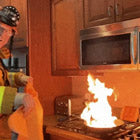 Fire
Fire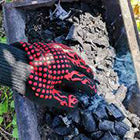 Safety
Safety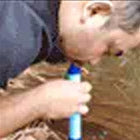 Survival
Survival Protection
Protection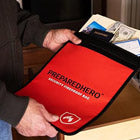 New
New
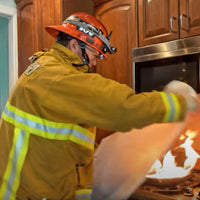 Fire
Fire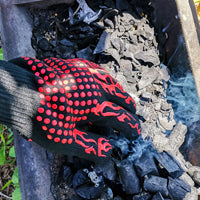 Safety
Safety Survival
Survival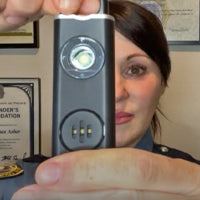 Protection
Protection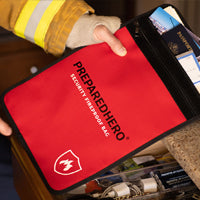 New
New
